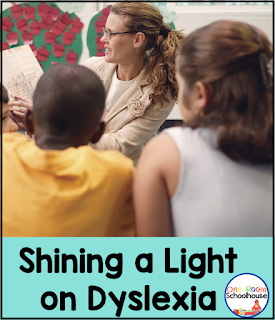Dyslexia is a learning difference that affects reading, writing, and language processing. It's important for educators to be well-informed and equipped to support students with dyslexia in their learning journey. In this blog post, we'll explore effective teaching tips that can help students with dyslexia thrive in the classroom.
- Understand Dyslexia
The first step in supporting students with dyslexia is to understand the condition. Dyslexia is a neurological difference, not a sign of lower intelligence or laziness. Educators should learn about the characteristics and common challenges associated with dyslexia to provide targeted support.
- Early Identification
Early identification is key. Be observant of students who exhibit signs of dyslexia, such as difficulties with phonological awareness, decoding words, or spelling. The sooner you recognize these challenges, the sooner you can provide the necessary interventions.
- Multisensory Teaching Methods
Utilize multisensory teaching methods that engage multiple senses (visual, auditory, kinesthetic) in the learning process. For instance, use tactile materials, colored text, and verbal repetition to reinforce learning. This approach can help students with dyslexia grasp concepts more effectively.
- Explicit Phonics Instruction
Dyslexic students often struggle with phonics, so it's crucial to provide explicit instruction in this area. Teach phonemic awareness, decoding, and encoding skills in a structured and systematic manner. Frequent practice and reinforcement are essential.
- Assistive Technology
Leverage assistive technology tools to support students with dyslexia. Text-to-speech software, speech recognition, and audiobooks can make reading and writing tasks more accessible. These tools reduce the barriers associated with reading and writing.
- Individualized Education Plans (IEPs)
Work closely with special education professionals to create and implement Individualized Education Plans (IEPs) tailored to each student's specific needs. IEPs outline the accommodations, modifications, and goals required to support the student's learning journey.
- Encourage Audiobooks and E-Readers
Audiobooks and e-readers can be game-changers for students with dyslexia. They provide an alternative way to access the content and can significantly improve comprehension and retention of information.
- Provide Extra Time
Allowing students with dyslexia extra time for assignments and assessments can reduce stress and give them a fair opportunity to demonstrate their knowledge and skills.
- Break Down Instructions
Break down complex tasks and instructions into smaller, manageable steps. This approach helps students with dyslexia focus on one element at a time, enhancing their understanding and completion of assignments.
- Create a Supportive Environment
Foster an inclusive and supportive classroom environment. Encourage students to ask questions, seek help, and express their concerns. Promote a growth mindset, where effort and perseverance are celebrated.
- Teach Self-Advocacy
Teach students with dyslexia to advocate for themselves. Help them develop the skills to communicate their needs and preferences effectively. Encourage them to be proactive in seeking the assistance and accommodations they require.
- Celebrate Strengths
Dyslexic students often possess unique strengths, such as creativity, problem-solving abilities, and strong visual thinking. Recognize and celebrate these strengths, boosting their self-esteem and confidence.
Teaching students with dyslexia requires patience, understanding, and a commitment to providing the necessary support. By implementing these teaching tips, educators can create an inclusive classroom environment where every student, including those with dyslexia, has the opportunity to thrive and reach their full potential. Remember, with the right support and accommodations, students with dyslexia can excel in their academic and personal endeavors.
Related Products:





